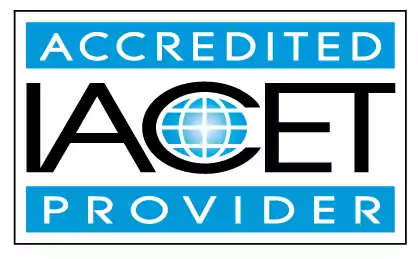Describe and understand the various parts of food labels.
Central Objective: Describe and understand the various parts of food labels for young children. Supporting Elements: Demonstrate how to create a successful block center by identifying the different block types, describing an effective block center setup, and recognizing the stages of block play. This page serves early childhood education and child care centers with practical, engaging guidance for teaching label literacy and hands-on block-building skills.Trainings incorporating this outcome
CDA Subject Areas
Proficiency Level
Topic Areas
Price
States
Alabama (1) Alaska (1) Alberta (1) Arizona (1) Australia (1) British Columbia (1) California (1) Colorado (1) Connecticut (1) Delaware (1) District of Columbia (1) Florida (1) Georgia (1) Hawaii (1) Indiana (1) Iowa (1) Jamaica (1) Kansas (1) Louisiana (1) Maine (1) Manitoba (1) Maryland (1) Massachusetts (1) Michigan (1) Minnesota (1) Mississippi (1) Montana (1) Nebraska (1) Nevada (1) New Hampshire (1) New Jersey (1) New Mexico (1) New York (1) Newfoundland and Labrador (1) North Dakota (1) Ohio (1) Oklahoma (1) Ontario (1) Oregon (1) Pennsylvania (1) Puerto Rico (1) Rhode Island (1) Saskatchewan (1) South Dakota (1) Texas (1) Thailand (1) United Kingdom (1) Utah (1) Vermont (1) Virgin Islands (1) Virginia (1) Washington (1) Wisconsin (1) Wyoming (1)
2 hours courses
Related Outcomes
- Demonstrate an understanding of creating a successful block center by identifying the various types of blocks, describing an effective block center setup, and recognizing the various stages of block play.
- Demonstrate understanding how to effectively use transitions for various age groups and for different parts of the school day
- Demonstrate an understanding of how to use transitions for various age groups and for different parts of the school day.
- Identify and understand the requirements of various programs in the State of Maryland.
- Demonstrate an understanding of proper food storage and preparation.
- Identify and understand the requirements of Child Care Subsidy (POC), Child and Adult Food Program, MSDE Child Care Credential, Tiered Reimbursement, and the Child Care Career and Professional Development Fund
- Describe the various ways teachers can address challenging behaviors in the classroom.
- Describe an understanding of who is a mandated reporter
- Describe and define various ways to prepare for earthquakes and floods.
- Describe an understanding of how reports are completed
- Describe the various forms of bullying
- Demonstrate understanding of developmentally appropriate practices for school-age children with various needs.
- Describe the proper procedures of medication administration including: authorizations forms, documentation, storage, training, emergent issues, and resources.
- Demonstrate understand developmentally appropriate practices for school-age children with developmental, emotional, cognitive, language and/or physical needs
- Demonstrate an understanding of appropriate supervision for all children’s activities.
- Demonstrates understanding of early intervention and its importance
- Demonstrate understanding of how reports are completed
- Demonstrate an understanding of classroom capacity, staff to student ratio, and regulations for outdoor play space
- Demonstrate an understanding of approaches to learning
- Describe Piaget’s sensorimotor and preoperational stages of cognitive development.
Related Articles
- My Five Senses
- Fine Motor Skills in Kids: From Finger Painting to Chopstick Mastery
- The Great Probiotic Treasure Hunt: Encouraging Kids to Enjoy Gut-Friendly Foods
- Beyond ABCs: Why ‘Loose Parts’ Play Is the Secret Sauce in Early Childhood Education
- Jingle All the Way to Emotional Regulation: Teaching Kids to Manage Holiday Stress
- Holiday Hazards 101: The Childproofing Guide to Tinsel, Toys, and Tiny Tree Lights
- A Nutcracker’s Guide to Nutrition: Teaching Healthy Holiday Eating Habits
- Valentine’s Day Activities for Kids That Will Make Their Hearts Melt!
- The Ultimate Playground Safety Checklist: Keeping Kids Safe
- 10 Mistakes Candidates Make When Building Their CDA Portfolios
- How can I support children’s language and literacy development?
- 🧩 Early Signs of Autism in Toddlers — What to Watch For 👀
- 🗣️ How Can I Talk to Parents About Bullying Without Blame or Conflict?🤝
- The Role of the Environment in Shaping Behavior
- Designing Learning Spaces that Inspire Curiosity, Not Chaos
- 🥦How Can I Help Picky Eaters Try New Foods—Without Stress or Pressure?
- Beyond the Daily Report: Fresh Ways to Build Stronger Parent Partnerships
- Supporting Dual Language Learners in Child Care Settings
 0.2 CEUs
0.2 CEUs